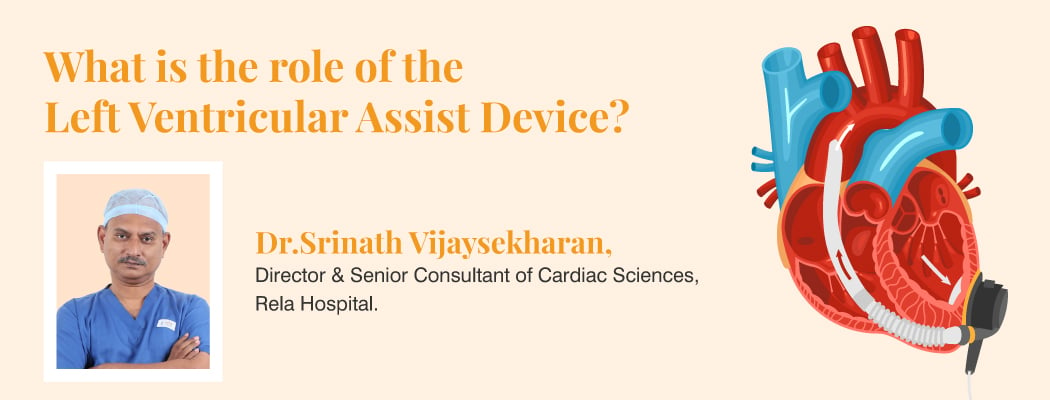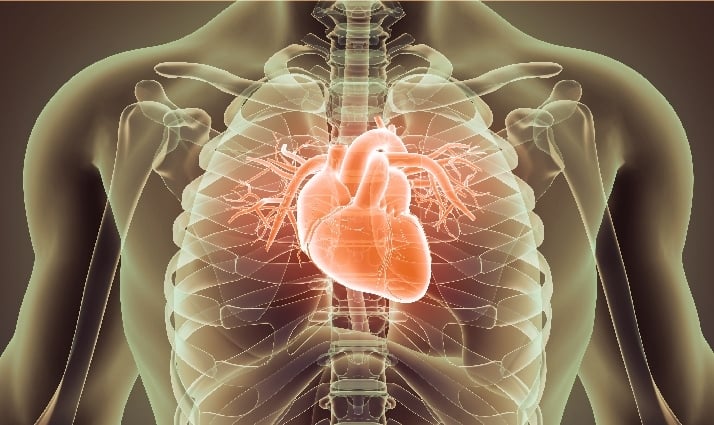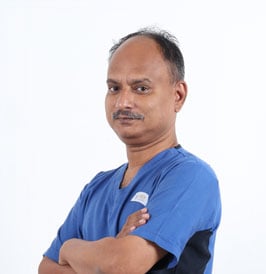What is the Role of the Left Ventricular Assist Device?
April 22, 2025

Heart failure remains one of the leading causes of morbidity and mortality worldwide, presenting significant challenges for both patients and healthcare professionals. However, recent advancements in surgical techniques and medical technology have revolutionized the management of advanced heart failure, offering improved survival prospects for patients with end-stage cardiac diseases. Among these advancements, Left Ventricular Assist Devices (LVADs) have emerged as a crucial therapy for treating heart failure.
Understanding Heart Failure
The incapability of the heart to pump blood effectively is a main characteristic of heart failure. Heart failure is a medical condition that results in a range of symptoms and a diminished quality of life. Numerous symptoms, such as swelling in the lower limbs, dyspnea, tiredness, and abrupt weight gain, are typically associated with this condition. A direct consequence of heart failure is a lower quality of life. Heart failure develops gradually as a result of several underlying conditions, such as cardiomyopathy, hypertension, coronary artery disease, and anomalies in the valves. It does not happen suddenly. Timely diagnosis and therapy depend heavily on knowing the illness and recognizing its early symptoms. An innovative approach to treating heart failure is LVAD therapy.
Left Ventricular Assist Devices (LVADs)
LVADs are mechanical pumps that help the heart’s left ventricle pump blood to the body’s other organs. The mechanism of these surgically implanted devices entails taking blood out of the heart’s left ventricle and transferring it through a mechanical pump positioned inside the chest. The weaker heart gets bypassed when the blood is pushed to the remaining parts of the body. LVADs offer a multitude of options, namely a temporary solution to allow the heart to mend after surgery, a long-term treatment for heart failure, or a bridge to heart transplantation. After LVAD surgery, patients frequently have longer survival times and better quality of life. LVADs are becoming increasingly accessible, effective, and user-friendly as technology develops.
Advantages of LVAD Treatment
This section highlights the key benefits of Left Ventricular Assist Device (LVAD) therapy in improving quality of life, survival, and overall heart function.
Increased Strength and Self-Sufficiency
One of the most significant benefits of LVAD therapy is the substantial increase in exercise tolerance and functional capacity. Many patients report a marked improvement in symptoms such as dyspnea and exhaustion, enabling them to engage in activities they were previously unable to perform. Regaining physical ability enhances patients’ independence, allowing them to travel, pursue hobbies, and spend more time with loved ones, leading to a happier, more fulfilling life.
Lower Hospitalization Rate and Higher Survival Rate
One of the main advantages of LVAD treatment is a visible improvement in the ability to exercise. Numerous individuals report significant relief from symptoms, including fatigue and dyspnea, allowing them to participate in activities they were previously unable to do. LVAD patients regain their physical capacity after treatment, which improves their quality of life. These patients regain their independence by helping them to travel, engage in hobbies, and spend more time with their near and dear ones.
LVADs have been demonstrated to increase survival rates and lower the likelihood of hospitalization in patients with advanced heart failure. LVADs assist in stabilizing patients’ health by reducing symptoms and improving cardiac output, which lessens the need for ER visits and repeated hospital admissions.
Cardiac Recovery and Systemic Benefits
In some cases, LVADs allow the heart to recover sufficient function, potentially reducing the need for further interventions. They also help manage fluid retention and improve organ function by ensuring consistent blood flow, alleviating strain on other body systems.
How is LVAD Treatment Performed
This section explains the step-by-step process involved in Left Ventricular Assist Device (LVAD) treatment, from preparation to recovery.
Before the Procedure
Before receiving a Left Ventricular Assist Device (LVAD), patients are typically admitted to the hospital a few days in advance for careful evaluation and preparation. This period allows healthcare providers to assess whether the LVAD remains the most suitable treatment option.
A series of diagnostic tests is conducted during this period to assess the health of the heart and other essential organs. These include:
- Blood tests to assess organ function and ensure the blood’s clotting ability is safe for surgery.
- An electrocardiogram (ECG) measures the heart’s rhythm and electrical activity.
- Chest X-ray to examine the heart’s size and shape, and check for any issues in the lungs.
- An echocardiogram is used to capture real-time images of the heart, evaluate valve function, and monitor blood flow.
- Cardiac catheterization is used to evaluate blood flow and pressures within the heart.
- Metabolic stress testing may also be conducted to analyze how the heart performs under physical strain.
These tests not only confirm eligibility for the procedure but also help rule out conditions that may prevent LVAD implantation, such as blood clotting disorders, irreversible kidney or liver failure, severe lung disease, or infections resistant to treatment.
During the Procedure
Implanting a Left Ventricular Assist Device (LVAD) involves major surgery, typically performed under general anesthesia. The procedure typically takes between three to six hours to complete. Prior to the surgery, the chest area is shaved, and IV medications are administered to ensure the patient is completely asleep and free from pain.
Once the patient is prepared, a breathing machine (ventilator) takes over the breathing process. In many cases, the heart is temporarily stopped using medication. During this period, a heart-lung bypass machine takes over the role of maintaining blood circulation and supplying oxygen to the body.
To access the heart, the surgeon makes a central incision down the chest and carefully separates the breastbone. In some situations, the surgeon may opt for an incision on the left side of the chest. The LVAD is then positioned, with the pump implanted at the tip of the heart. A flexible tube channels blood from the pump into the aorta, the body’s main artery, which distributes oxygen-rich blood throughout the body.
An external cable connects the internal device to a controller and battery pack located outside the body, typically worn around the waist. Once the LVAD is properly implanted and confirmed to be functioning, the patient is gradually taken off the heart-lung bypass machine, and the device begins supporting the heart’s pumping function.
After the Procedure
After LVAD surgery, patients stay in the hospital for monitoring and recovery. The care team manages fluids, prevents infections, and supports breathing if needed. As strength returns, patients are encouraged to move and may transition to rehab if necessary.
Before discharge, patients and caregivers are trained to manage the LVAD, including cleaning the device site, recognizing infection signs, handling alarms, and keeping the system charged. Guidelines are also provided for resuming daily activities like driving, exercising, and traveling.
Adopting healthy lifestyle habits and joining cardiac rehab can further support recovery and long-term well-being.
Results
Following LVAD implantation, you will require regular checkups to track your recovery and identify any possible complications. Your healthcare team will routinely assess the device to ensure it’s functioning correctly. You may also undergo specific tests to monitor your blood pressure.
To reduce the risk of blood clots, your doctor will prescribe blood-thinning medication, which requires regular blood tests to ensure it’s working effectively and safely.
Possible Limitations
LVAD therapy has revolutionized heart failure management. However, there are still certain drawbacks and potential areas of improvement. Careful management and close monitoring of the patients undergoing LVAD treatment is imperative to take care of occasional complications such as device malfunctions, bleeding, thrombosis, and infection. Additionally, the cost of long-term care and LVAD implantation presents challenges for patients and healthcare systems. Despite these difficulties, patients who are appropriately selected for LVAD therapy have shown remarkable improvements in survival, functional ability, and quality of life.
Conclusion
LVADs have significantly improved the quality of life for heart failure patients by increasing physical capacity and survival rates. As technology advances, LVADs will play an increasingly important role in enhancing the quality of life for heart failure patients.
Frequently Asked Questions
1. Who is a candidate for LVAD surgery?
LVADs are typically considered for patients with advanced heart failure who have not responded to other treatments. Candidates undergo thorough evaluations to determine suitability for the device.
2. How long can a person live with an LVAD?
The duration a person can rely on a left ventricular assist device (LVAD) varies depending on factors such as the type of LVAD, whether it’s being used as a bridge to a heart transplant or for destination therapy, and the individual’s overall health. The latest models are designed to last for several years, and many patients have lived with an LVAD for over five years.








